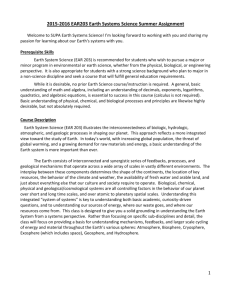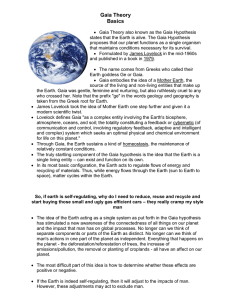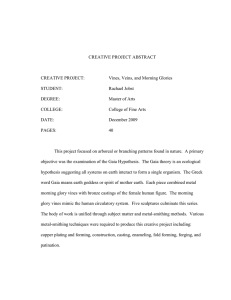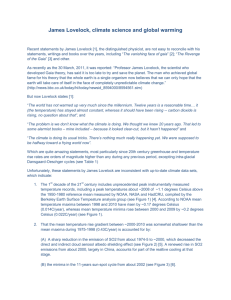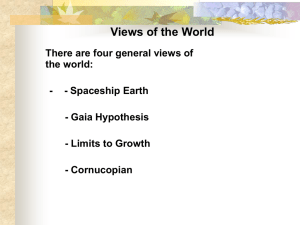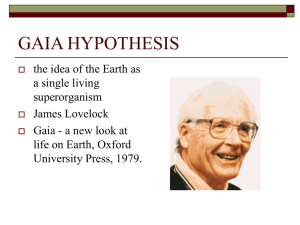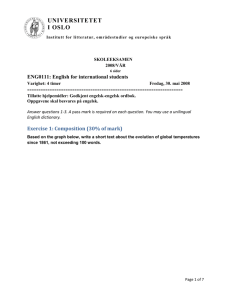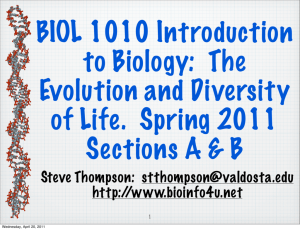1.3-Systems-Theory-the-Gaia-Hypothesis1
advertisement
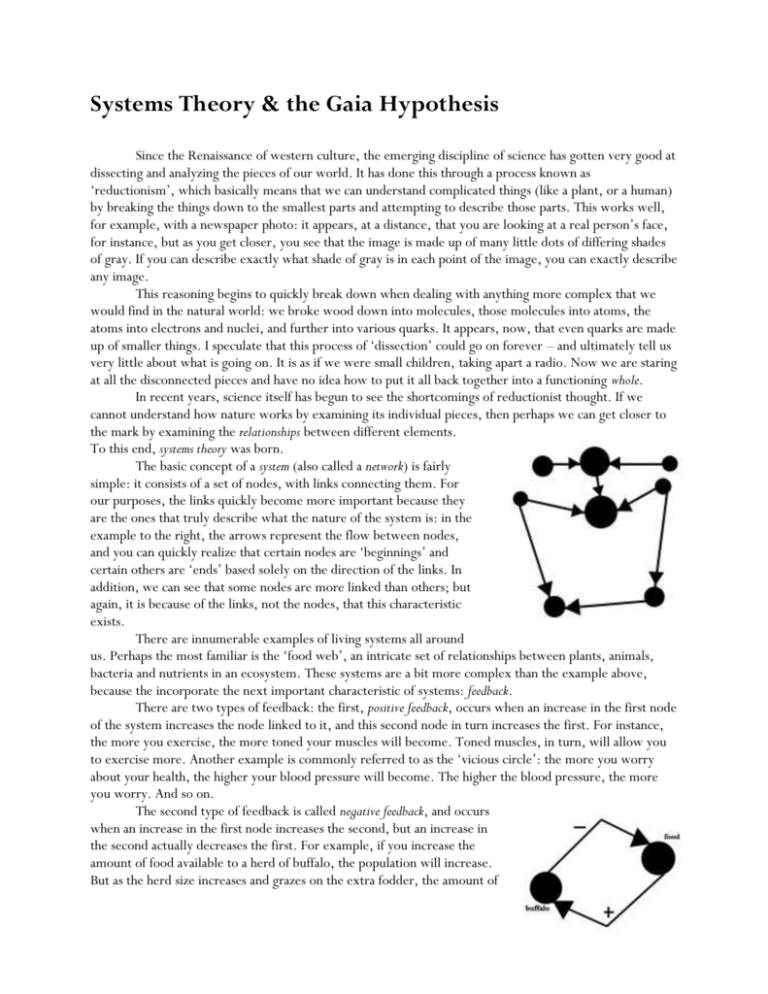
Systems Theory & the Gaia Hypothesis Since the Renaissance of western culture, the emerging discipline of science has gotten very good at dissecting and analyzing the pieces of our world. It has done this through a process known as ‘reductionism’, which basically means that we can understand complicated things (like a plant, or a human) by breaking the things down to the smallest parts and attempting to describe those parts. This works well, for example, with a newspaper photo: it appears, at a distance, that you are looking at a real person’s face, for instance, but as you get closer, you see that the image is made up of many little dots of differing shades of gray. If you can describe exactly what shade of gray is in each point of the image, you can exactly describe any image. This reasoning begins to quickly break down when dealing with anything more complex that we would find in the natural world: we broke wood down into molecules, those molecules into atoms, the atoms into electrons and nuclei, and further into various quarks. It appears, now, that even quarks are made up of smaller things. I speculate that this process of ‘dissection’ could go on forever – and ultimately tell us very little about what is going on. It is as if we were small children, taking apart a radio. Now we are staring at all the disconnected pieces and have no idea how to put it all back together into a functioning whole. In recent years, science itself has begun to see the shortcomings of reductionist thought. If we cannot understand how nature works by examining its individual pieces, then perhaps we can get closer to the mark by examining the relationships between different elements. To this end, systems theory was born. The basic concept of a system (also called a network) is fairly simple: it consists of a set of nodes, with links connecting them. For our purposes, the links quickly become more important because they are the ones that truly describe what the nature of the system is: in the example to the right, the arrows represent the flow between nodes, and you can quickly realize that certain nodes are ‘beginnings’ and certain others are ‘ends’ based solely on the direction of the links. In addition, we can see that some nodes are more linked than others; but again, it is because of the links, not the nodes, that this characteristic exists. There are innumerable examples of living systems all around us. Perhaps the most familiar is the ‘food web’, an intricate set of relationships between plants, animals, bacteria and nutrients in an ecosystem. These systems are a bit more complex than the example above, because the incorporate the next important characteristic of systems: feedback. There are two types of feedback: the first, positive feedback, occurs when an increase in the first node of the system increases the node linked to it, and this second node in turn increases the first. For instance, the more you exercise, the more toned your muscles will become. Toned muscles, in turn, will allow you to exercise more. Another example is commonly referred to as the ‘vicious circle’: the more you worry about your health, the higher your blood pressure will become. The higher the blood pressure, the more you worry. And so on. The second type of feedback is called negative feedback, and occurs when an increase in the first node increases the second, but an increase in the second actually decreases the first. For example, if you increase the amount of food available to a herd of buffalo, the population will increase. But as the herd size increases and grazes on the extra fodder, the amount of food will actually diminish. This has the additional effect of coming back around to eventually put a check on the herd’s expansion. An interesting feature of systems with negative feedback is that they are self-regulating, meaning they usually gravitate towards a state of balance. They cannot escalate wildly in one direction or the other, because the negative feedback will always provide the counterbalancing force, in either direction. This was an important realization in the 1940s and 50s, and allowed science to explain concepts such as homeostasis in the body (our body’s ability to maintain a stable temperature, electrolyte balance, etc…), food webs, and sustainable ecology (to name but a few). The idea of self-regulation also became one of the first glimmers in modern science of an ‘intelligence’ in nature, a concept we will return to often. In the 1970s James Lovelock and Lynn Margulis elaborated on the ideas of feedback within complex systems and self-regulation to present a bold ‘new’ view of our planet, a view that they termed the Gaia hypothesis. In Lovelock’s own words, “Consider Gaia theory as an alternative to the conventional wisdom that sees Earth as a dead planet made of inanimate rocks, ocean, and atmosphere, and merely inhabited by life. Consider it as a real system, comprising all of life and all of its environment tightly coupled so as to form a self-regulating entity.” In essence, the entire planet could be seen as a living, breathing system that maintained its own homeostasis much like our own bodies do. This was a difficult pill for many to swallow, because the prevailing dogma was still that of ‘humans as masters of creation’. To see ourselves as just a living piece of a much, much larger living system was somehow demeaning to the individuals who had spent their lives in pursuit of the smallest pieces of nature. Fortunately, the Gaia hypothesis has now become much more accepted as we move into concepts such as deep ecology and holism. The two key points to remember from the Gaia hypothesis are: relationship. This is the ‘tight coupling’ Lovelock refers to above, and emphasizes again that the links between the pieces are the most important part to making the whole work. self-regulation. Negative feedback loops allow all life that is interconnected by relationship to maintain balance. This balance is essential to sustaining life itself, and is a property of the system that cannot be predicted from looking at its components, only from looking at the relationships within the system.
